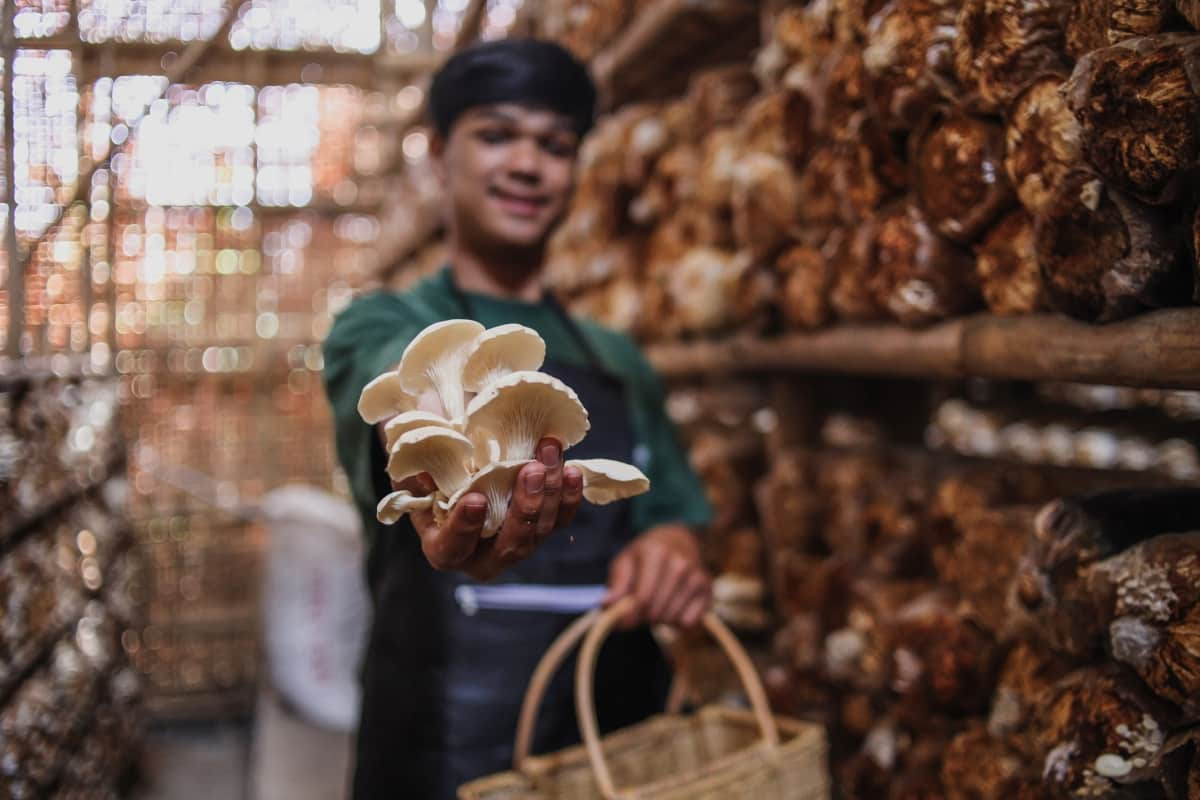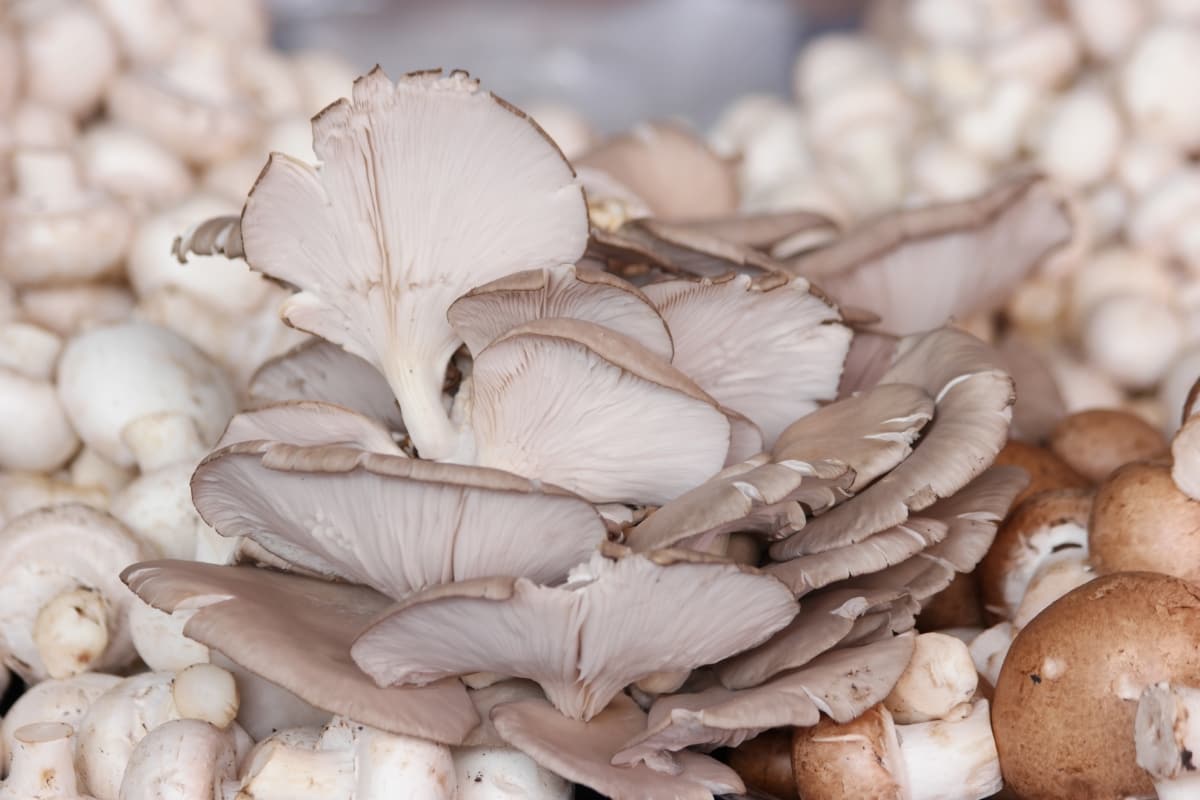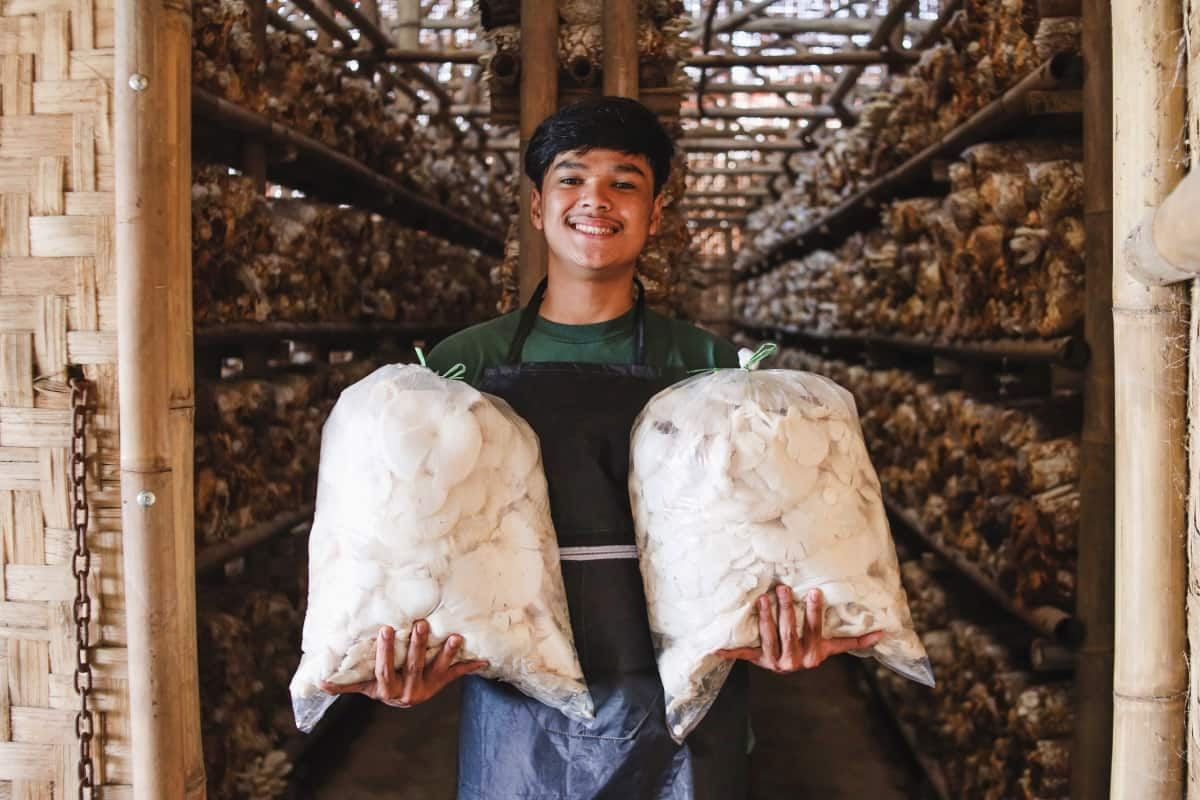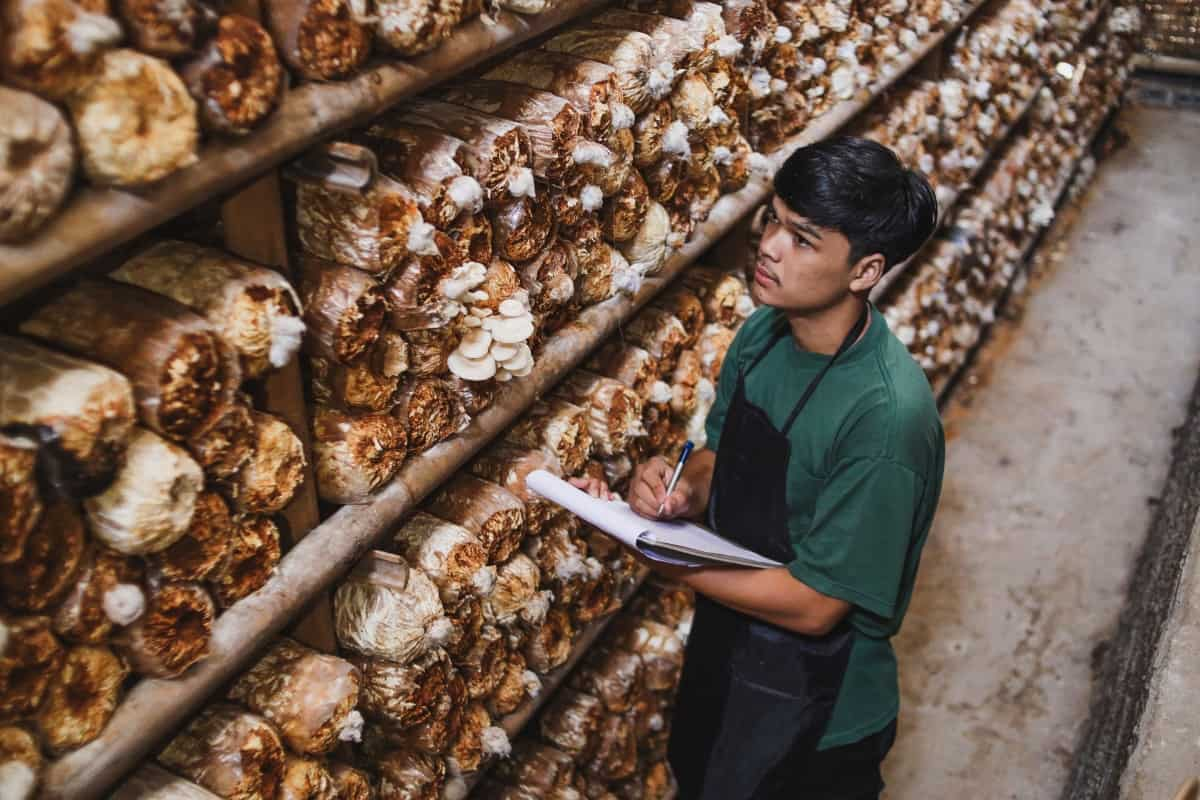Mushrooms are fascinating organisms that fall into the category of fungi. They are neither plants nor animals but have their unique characteristics. Homemade insecticides can be made using common household items such as garlic, neem oil, essential oils, vinegar, and chili peppers. These ingredients are readily available and much cheaper compared to store-bought chemical pesticides.

Homemade Insecticides for Mushrooms
Need for Homemade Insecticides for Mushroom Cultivation
Using homemade insecticides promotes sustainable farming practices by reducing reliance on synthetic pesticides. It aligns with organic principles and supports a healthier ecosystem overall. Homemade insecticides promote sustainability in Mushroom cultivation. By utilizing natural ingredients in everyday households, growers reduce their reliance on synthetic pesticides that can harm beneficial insects and disrupt the ecosystem.
Making a Garlic Spray Insecticide for Mushrooms
By making your garlic spray, you can effectively control pests in your Mushroom cultivation without relying on harmful chemicals. To make a garlic spray insecticide for Mushrooms, start by crushing several cloves of garlic and adding them to a container filled with water. Then, the mixture sit overnight to allow the active compounds in garlic to infuse into the water. The next day, strain the liquid and transfer it into a spray bottle. Now you’re ready to combat those pesky pests. Spray the solution onto your Mushrooms or directly onto any affected areas.
Using Neem Oil as an Organic Insecticide for Mushroom Infestations
Mix one teaspoon of pure neem oil with one quart of water and add dish soap drops to make a neem oil spray. Shake well before use, then spray directly onto your Mushroom plants or growing medium. Follow the instructions and wear protective clothing when applying.
Essential Oils for Homemade Mushroom Insecticides
Peppermint oil – Its strong aroma not only repels insects but also has a calming effect on the Mushrooms. Dilute peppermint oil in water and spray it directly onto your Mushroom crops to keep pesky bugs at bay.
Tea tree oil – This potent extract has antifungal and antiviral qualities, making it an excellent choice for controlling pests in Mushroom farming. Mix a few teaspoons of tea tree oil with water and apply it to your Mushrooms using a spray bottle or misting device.
Lavender oil – It is another great option when it comes to homemade Mushroom insecticides. Not only does lavender have a delightful scent, but it also acts as a natural repellent against various pests such as flies, mites, and aphids. Dilute a small amount of lavender oil with water and use it to mist your Mushrooms regularly.
In case you missed it: Management of Fungal Diseases in Grapes: How to Control and Prevent with Natural and Organic Treatment

DIY Insecticidal Soap Recipe for Controlling Mushroom Pests
Mix liquid castile soap (one tablespoon) with one quart of water to create insecticidal soap. It is a natural vegetable-based soap that won’t harm the environment or your Mushrooms. Once your mixture is ready, transfer it into a spray bottle for easy application. When using the insecticidal soap on your Mushrooms, thoroughly coat both the tops and undersides of the leaves where pests tend to hide. Remember that prevention is always better than treatment when dealing with pest infestations.
Creating a Chili Pepper Spray to Deter Insects in Mushroom Cultivation
To make this DIY spray, chop some fresh chili peppers and place them into a blender or food processor. Add water to the mixture and blend until you have a smooth consistency. Next, strain the mixture through cheesecloth or a fine mesh sieve to remove larger particles. Transfer the liquid into a bottle for easy application. Wearing gloves is important when using this chili pepper spray as it can irritate. Spray the solution directly onto your Mushroom plants, focusing on areas where insects are most commonly found.
Vinegar-Based Homemade Insecticides for Mushrooms
You only need white vinegar and water to create a simple yet potent vinegar-based insecticide. Mix both ingredients equally in a spray bottle and shake well. Then, generously spray the solution directly onto the affected areas of your Mushrooms or around the Mushroom bed.
The strong scent and acidity of vinegar act as natural repellents against insects such as aphids, mites, and slugs. Remember to reapply the mixture every few days or after rainfall to ensure continuous protection against pests. However, be cautious not to overuse it as excessive application may harm delicate Mushroom mycelium.
How to Make a Tobacco Spray Insecticide for Mushroom Pest Control
Start by soaking a handful of chewing tobacco or pipe tobacco in water overnight. The next day, strain the liquid into a container. Dilute the mixture with additional water to create a strong solution to repel pests but not so strong that it harms your Mushrooms. To apply the tobacco spray, mist it over the affected areas of your Mushroom beds or directly on the pests themselves. Be sure to reapply every few days or after rain, as the effectiveness of the spray may diminish over time.
Utilizing Pyrethrum Extract as an Effective Mushroom Insecticide
The active ingredients in pyrethrum target and disrupt the nervous systems of insects upon contact or ingestion. To use pyrethrum extract as an insecticide for Mushrooms, dilute it according to the manufacturer’s instructions and apply it to the affected areas. It is important to note that thorough coverage is crucial for optimal effectiveness. As with any pesticide, following proper safety precautions, like wearing protective clothing and gloves during application, is essential.
Homemade Botanical Insecticides for Organic Mushroom Farming
The popular botanical insecticide for Mushrooms is a mixture of crushed chrysanthemum flowers and water. The active ingredient in this mixture, pyrethrum, acts as a powerful insect repellent while being safe for the environment. Consider making a homemade tomato leaf spray for caterpillars or beetles. Tomato leaves contain alkaloids that act as potent toxins against certain insects. Blend up tomato leaves with water until smooth, strain out any solids, and apply the liquid to affected areas of your Mushroom farm.
In case you missed it: Management of Fungal Diseases in Ornamental Trees: How to Control and Prevent with Natural and Organic Treatment

Baking Soda for Homemade Fungicidal and Insecticidal Sprays for Mushrooms
This natural remedy helps control fungal infections and repels common pests that can wreak havoc on your Mushroom cultivation. When used as a fungicide, baking soda creates an alkaline environment that inhibits the growth of fungi. Mix one tablespoon with one gallon of water in a bottle to make a baking soda spray.
Shake well to ensure thorough mixing. Then, spray this solution onto your Mushroom crops, especially in areas prone to fungal infections or where pests are commonly found. Regularly applying a homemade baking soda spray can help protect your Mushroom crop from fungal diseases and pesky insects without resorting to harsh chemical pesticides.
Citrus Peel Extracts for Mushroom Pest Management
You can start by collecting peels from oranges, lemons, or grapefruits to harness the power of citrus peel extracts for Mushroom pest control. These peels contain essential oils that are natural insect and pest repellents. Transfer the citrus peel extract spray into a spray bottle and evenly coat your Mushroom beds or growing containers. This will help deter pests from approaching and damaging your precious fungi. By using this natural approach to pest management, you’re avoiding harmful chemicals while keeping unwanted visitors at bay.
Combining Homemade Insecticides with Cultural Practices for IPM in Mushroom Cultivation
The main aspect of IPM is maintaining proper hygiene and sanitation in your Mushroom farm. Regularly clean and disinfect your growing containers, tools, and equipment to prevent the buildup of pests and diseases. Remove any decaying organic matter from the growing area, as it can attract insects.
Proper ventilation is crucial for maintaining optimal conditions for Mushroom growth while discouraging pests. Adequate airflow helps regulate temperature and humidity levels and prevents stagnant air where pests thrive. Ensure your growing area has good ventilation systems or natural airflow through open windows or vents.
Frequently Asked Questions on Homemade Insecticides for Mushrooms
Are There Any Natural Ingredients that Work Well Against Pests in Mushrooms?
Neem oil is another fantastic option due to its antifungal and pesticidal properties. Mix neem oil and water and apply it to the affected Mushrooms or surrounding soil.
Why Should I Use Homemade Insecticides Instead of Store-Bought Ones?
Homemade insecticides offer a more natural and eco-friendly approach compared to chemical-based alternatives.
Are Homemade Insecticides Effective Against All Types of Pests?
While they can be effective against many common Mushroom pests, their efficacy may vary depending on the specific pest species and infestation severity.
In case you missed it: Best Homemade Organic Pest Control for Termites: Natural Ways to Get Rid of Termites

Conclusion
The biggest challenge Mushroom farmers face is dealing with pests and insects that can wreak havoc on their crops. This is why we are using homemade insecticides for Mushroom cultivation. The need for homemade insecticides in Mushroom cultivation stems from the importance of maintaining a sustainable approach while protecting crops from pests naturally and responsibly.
- Beneficial Insects in Pest Management
- Natural Solutions for Pest Control in Flower Gardens
- Types of Fungicides Used in Agriculture
- Common Issues in the Fruit Development Stage of Pomegranate Farming
- Fruit Development Issues in Papaya: Easy Solutions and Treatment
- Soil-Borne Diseases and How to Protect Your Plants
- Practices to Prevent Disease Spread in the Garden
- From Wilted to Thriving: How to Treat Root Rot Naturally in Houseplants
- Natural Remedies to Cure Brown Spots on Fig Tree Leaves